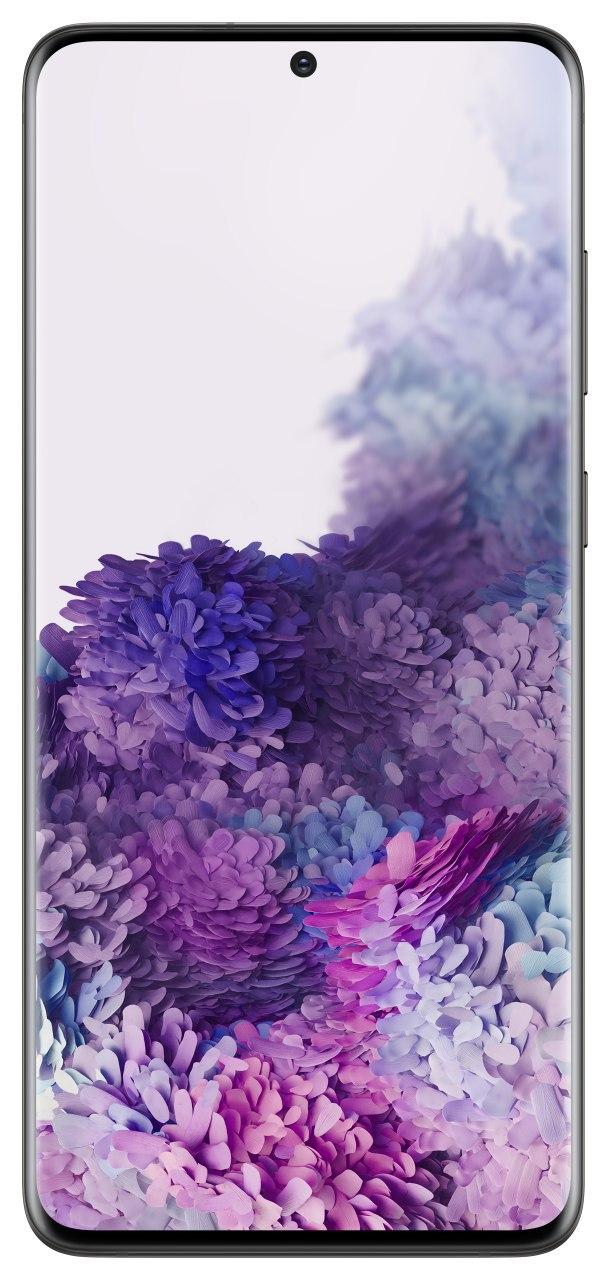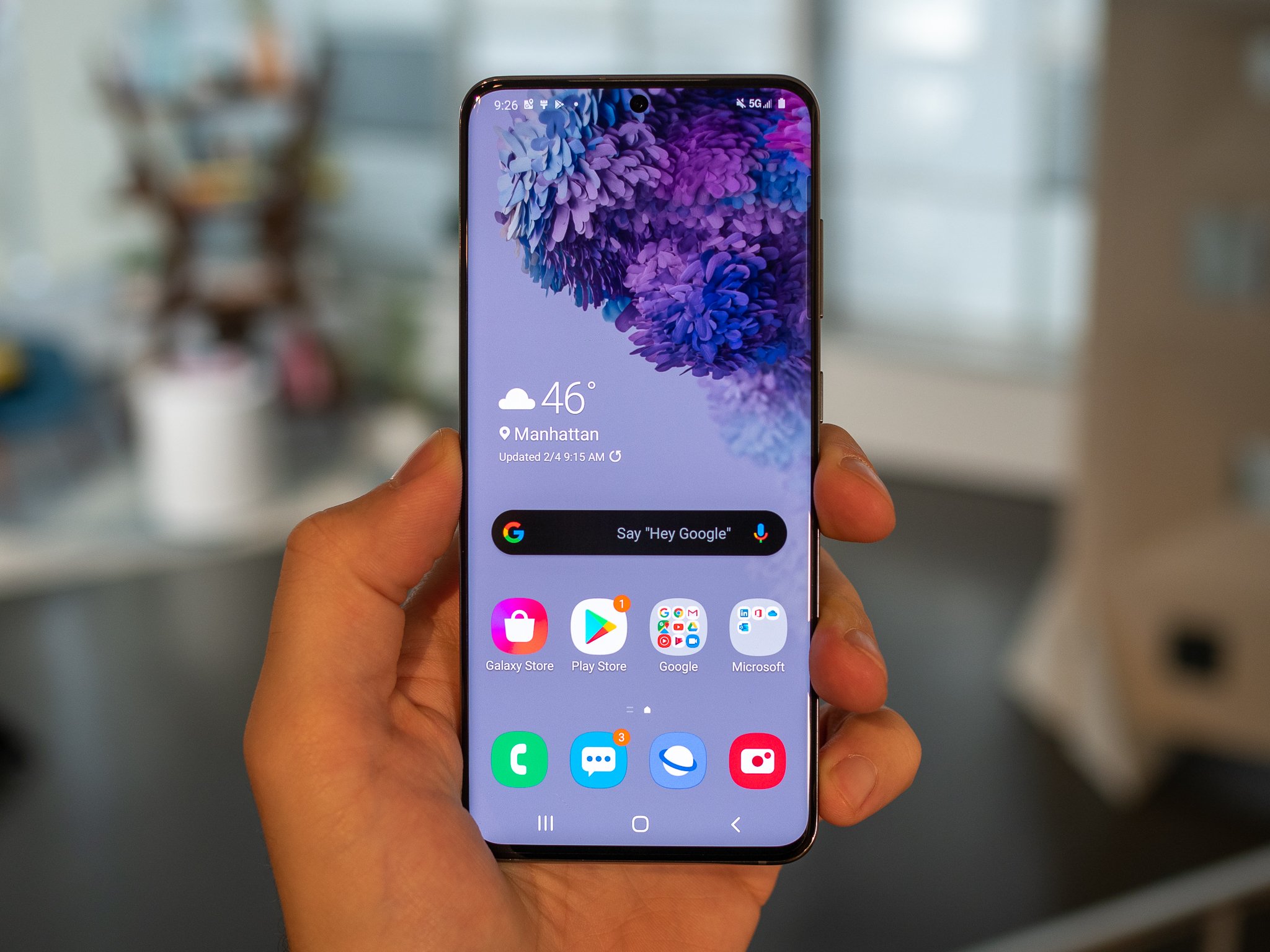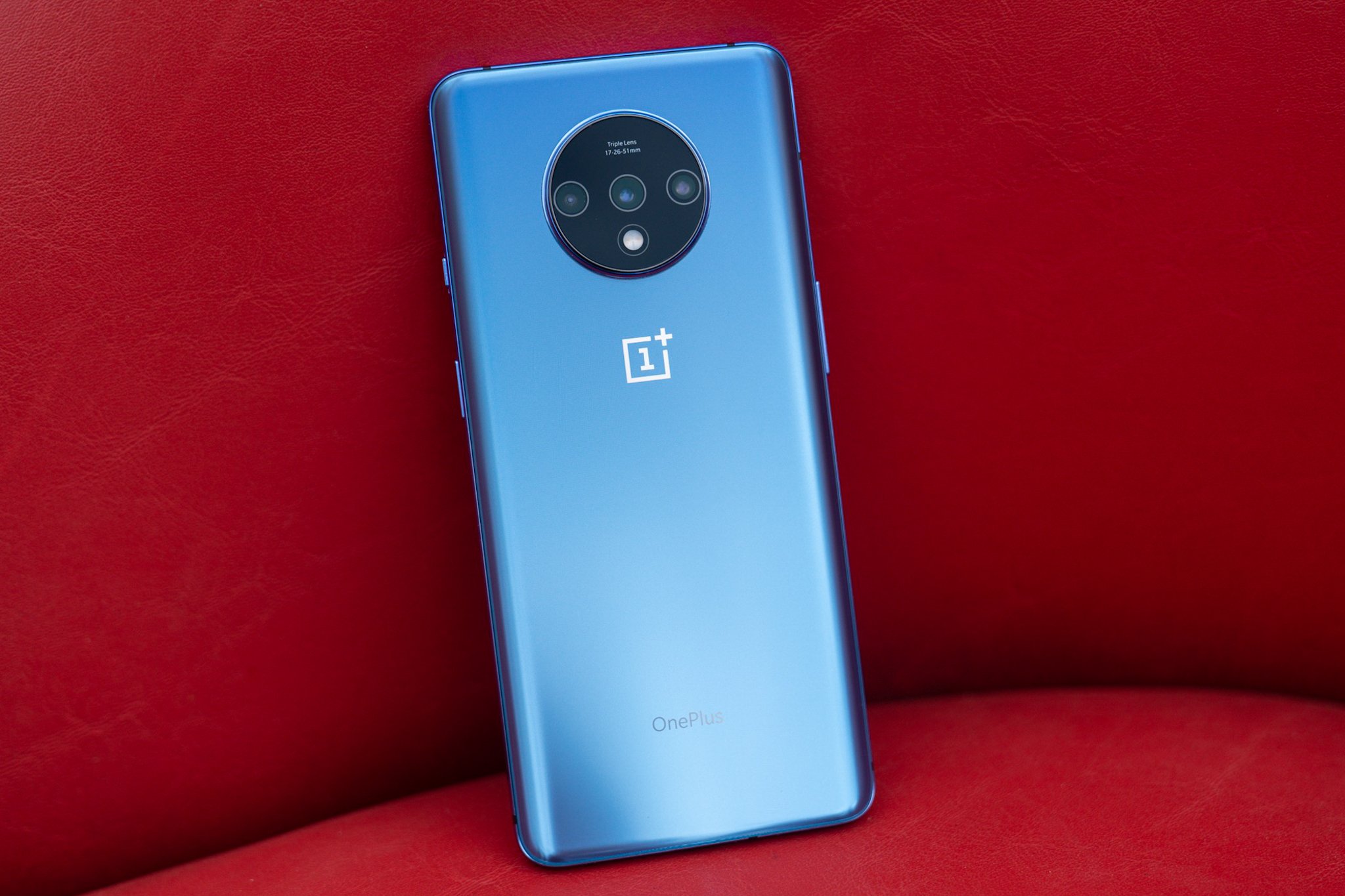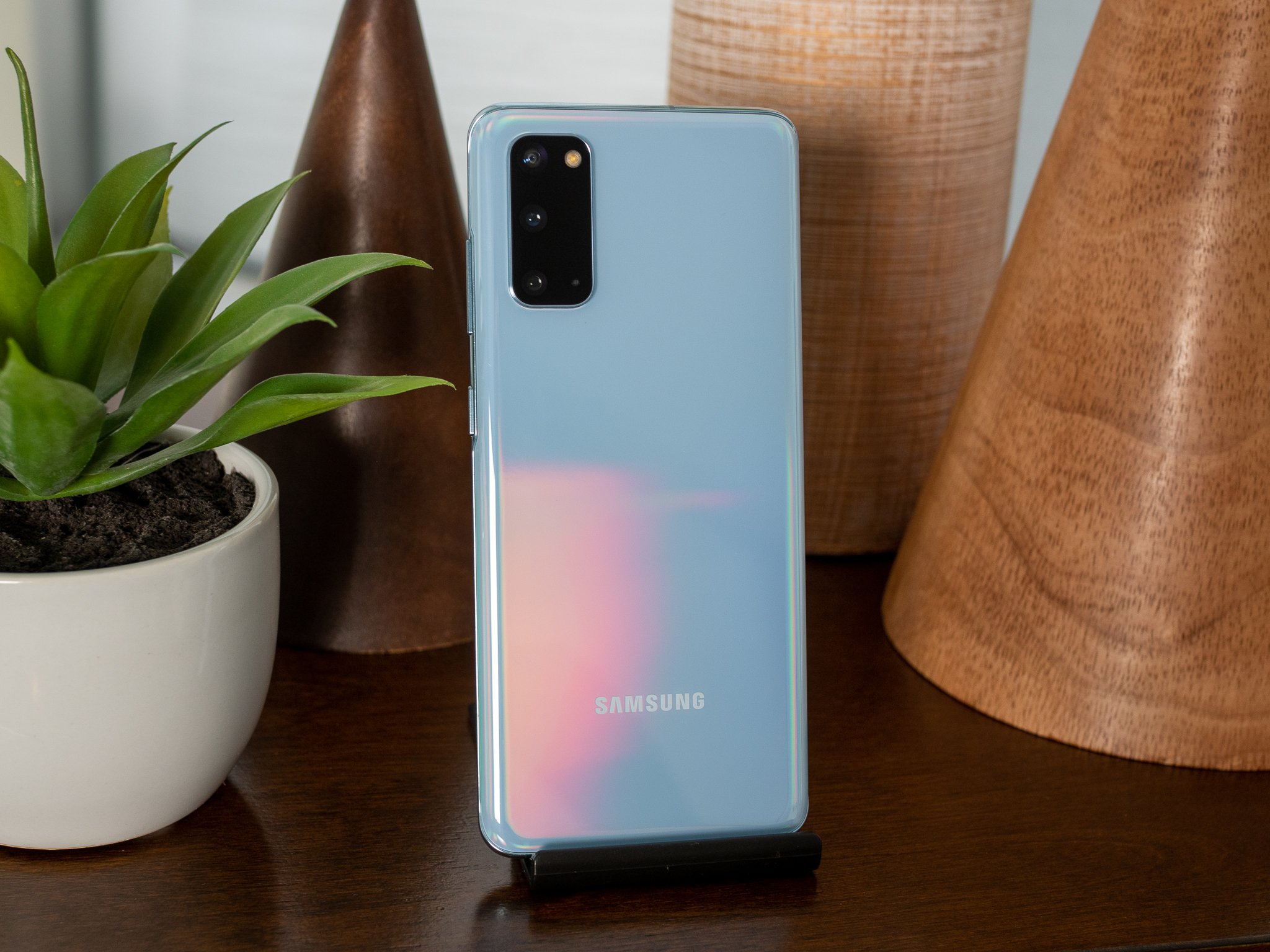Samsung Galaxy S20
All the latest tech
Pros
- Stunning 120Hz AMOLED display
- Snapdragon 865 chipset
- Enticing camera upgrades
- Larger battery
- Sub-6 5G connectivity
Cons
- Expensive
- No headphone jack
The Galaxy S20 includes a ton of exciting upgrades, including a sublime 120Hz AMOLED display that sets new standards for the industry. The phone is packing the latest internal hardware, upgraded cameras, 5G connectivity, and a large 4,000mAh battery. Combine all of that with the extras — wireless charging and IP68 water resistance — and the S20 is the flagship to beat.
OnePlus 7T
Fast and fluid
Pros
- 90Hz AMOLED display
- 30W fast charging
- Snapdragon 855+ chipset
- Android 10 with clean software
- Stereo sound
Cons
- No wireless charging
- No water resistance
OnePlus continues to lead the way in terms of value. The 7T is a fantastic phone in 2020, and the 90Hz AMOLED display is silky smooth in day-to-day use. OxygenOS delivers the best Android interface out there, and the optimizations make the phone a delight to use. Add in 30W fast charging and top-notch hardware, and you'll understand why the OnePlus 7T is one of the best phones in the market.
OnePlus is the company to beat in the value segment, and over the last three years, it's showed that it can hold its own with the likes of Samsung when it comes to the internal specs. Sure, its devices may not have the best cameras, but OnePlus' combination of robust hardware and clean software is hard to beat. With the Galaxy S20, Samsung is offering its most ambitious flagship in several years, with the phone offering a host of exciting new features. Here's how the 7T holds up next to the S20.
The Galaxy S20 is the best compact phone you can buy right now
With a height of 151.7mm and an overall weight of 163g, the Galaxy S20 is a fantastic "compact" phone in 2020. Phones have gotten increasingly larger over the last three years, and the introduction of QHD+ panels and 90Hz or 120Hz refresh rates has also made devices that much more power-intensive. Then there's also the fact that this year's flagships have 5G connectivity, adding more strain on a battery.
The Galaxy S20 is a fantastic compact phone, and you still get a 120Hz AMOLED display and a large 4,000mAh battery.
For what it's worth, Samsung has managed to strike the ideal balance with the S20. The phone is small enough that it's still usable one-handed, but you still get a 6.2-inch display and a large 4,000mAh battery. We'll have to wait and see how that battery holds up with the 120Hz display and 5G, but the phone has a solid foundation.
The OnePlus 7T has a larger 6.55-inch display, but it's also 9.2mm taller. The display itself is one of the phone's strong points, with OnePlus offering a gorgeous Fluid AMOLED panel with a 90Hz refresh rate. The software has also been optimized to take full advantage of the refresh rate, and it's an absolute joy to use the 7T in everyday tasks.
On the subject of high refresh rates, Samsung is finally staking its claim in this segment by rolling out a 120Hz display on the S20. The Dynamic AMOLED screen on the S20 is sublime, and you have to use it to see just how fluid it is in day-to-day tasks. Samsung missed the 90Hz boat last year, but it more than made up for it with this 120Hz panel.
The Snapdragon 855+ chipset on the 7T is one of the fastest in the market, but the Galaxy S20's Snapdragon 865 offers a smidgen more performance. Of course, you won't notice it in most day-to-day use cases, as the 7T is about as fast and fluid as the S20. However, a year or so down the line, the beefier hardware on the S20 could end up ensuring things don't slow down.
The OnePlus 7T has excellent specs, but you just get more with the S20: the SD865 chipset, 5G, Wi-Fi 6, IP68 rating, and wireless charging.
You get 12GB of RAM as standard on the S20, 4GB more than the 7T. The module itself is faster, with the phone one of the first to feature the latest LPDDR5 memory. We'll have to wait and see if LPDDR5 makes any tangible difference in day-to-day usage, but for now, Samsung gets to tout the feature as a point of differentiation for the S20. Both phones come with UFS 3.0 storage modules as standard, but there's no microSD slot on the 7T. You can add an SD card up to 1TB on the S20 if you're so inclined.
The S20 also has extras that you care about. There are IP68 dust and water resistance and 15W wireless charging. One of the reasons OnePlus is able to sell the 7T for $600 is by omitting features like wireless charging, and if you care enough about it the S20 is the obvious pick. In terms of wired charging, OnePlus has a marginal edge thanks to its 30W Warp Charge standard. The S20, meanwhile, has 25W fast charging over USB PD 3.0.
Samsung was the first to introduce a Wi-Fi 6 modem on its phones last year, and the S20 continues that trend. Wi-Fi 6 is one of those features that you don't really need to care about right now, but if you're looking to future-proof your investment, it is a point to consider. Wi-Fi 6 routers are becoming more mainstream, so if you are interested in picking up a new router, know that the S20 will be able to take full advantage of the low latency and high bandwidth on offer (provided if you have a decent enough internet connection).
| Category | Samsung Galaxy S20 | OnePlus 7T |
|---|---|---|
| Operating system | Android 10 One UI 2.0 |
Android 10 OxygenOS 10 |
| Display | 6.2-inch 120Hz Dynamic AMOLED 3200x1440 (20:9) HDR10+ Gorilla Glass 6 |
6.55-inch 90Hz Fluid AMOLED 2400x1080 (20:9) HDR10+ Gorilla Glass 6 |
| Chipset | Snapdragon 865 1 x 2.84GHz A77 3 x 2.42GHz A77 4 x 1.80GHz A55 Adreno 650 7nm |
Snapdragon 855+ 1 x 2.96GHz Kryo 485 3 x 2.42GHz Kryo 485 4 x 1.80GHz Kryo 485 Adreno 640 7nm |
| RAM | 12GB LPDDR5 | 8GB LPDDR4X |
| Storage | 128GB/512GB UFS3.0 | 128GB/256GB UFS 3.0 |
| MicroSD slot | Yes (Up to 1TB) | ❌ |
| Rear camera 1 | 12MP f/1.8 1.8um, OIS 8K at 24fps |
48MP, f/1.6 OIS, EIS 4K at 60fps |
| Rear camera 2 | 64MP, f/2.0 0.8um, OIS, telephoto 3x optical zoom, 30x hybrid |
12MP, f/2.2 OIS, 2x zoom |
| Rear camera 3 | 12MP, f/2.2 1.4um, wide-angle |
16MP, f/2.2 Wide-angle lens 117-degree field-of-view |
| Front camera 1 | 10MP, f/2.2 4K video, autofocus |
16MP, f/2.0 Sony IMX471 |
| Connectivity | 5G Sub-6 Wi-Fi 6 4x4 MIMO, Bluetooth 5.0 NFC, AptX HD, A-GPS |
Wi-Fi ac 2x2 MIMO, Bluetooth 5.0 AptX HD, NFC, A-GPS |
| Audio | USB-C Stereo speakers |
USB-C Stereo speakers |
| Battery | 4000mAh Non-removable |
3800mAh Non-removable |
| Charging | USB-C PD 3.0 25W fast charging 15W wireless charging |
USB-C 3.1 30W fast charging |
| Water resistance | IP68 | ❌ |
| Security | In-display fingerprint sensor (ultrasonic) | In-display fingerprint sensor (optical) |
| Colors | Cloud Blue, Cloud Pink, Cosmic Gray, Cosmic Black | Glacier Blue, Frost Silver |
| Dimensions | 151.7 x 69.1 x 7.9mm 163g |
160.9 x 74.4 x 8.1mm 190g |
The Galaxy S20 has better cameras, but the 7T has cleaner software
Samsung has rolled out modest camera upgrades over the last two years, but that isn't the case this year. With the S20 series, the manufacturer is offering upgraded cameras that take better photos in just about every light condition. You also get much more versatility, with the S20 featuring a 64MP zoom lens that can do 3x optical and 30x hybrid zoom. That's a big deal — particularly in a phone of its size — and combined with the 12MP wide-angle lens, the S20 is a great all-around shooter.
With 3x optical zoom and 8K video recording, Samsung is clearly the lead on the camera front.
What's also interesting is that Samsung is offering 8K video recording with the Galaxy S20. The feature combined with stabilized video makes the S20 the go-to choice for those looking to shoot video with an Android phone. The 7T has decent cameras in its own right, but it just isn't on the same level as Samsung.
Where the 7T wins out is software. OxygenOS is my favorite Android interface, and like a fine wine, it continues to get better with time. The constant updates combined with meaningful feature additions make OxygenOS a fantastic skin, and if clean software is a priority for you, the 7T is the default option.
Need a great camera and wireless charging? Get the Galaxy S20
The Galaxy S20 has all the extras that you're looking for in a phone, and features like water resistance and wireless charging make a huge difference. Ultimately, it comes down to the cameras. The Galaxy S20 is in a totally different league here, and that allows Samsung to pull into the overall lead.
All the new features combined with the upgraded cameras make the Galaxy S20 a much more enticing option.
The OnePlus 7T is one of the best phones you can buy today. There's no denying that — what OnePlus managed to achieve on the software front is incredible. But the phone is missing a few features, and the cameras aren't quite on the same level as what you get on the Galaxy S20.
If you intend to take a lot of photos and shoot video, the Galaxy S20 is the obvious choice. Yes, it's $500 more than the 7T, but it also has enough features to justify that price. There really isn't a bad choice here; if you want all the latest features and a fantastic camera, get the Galaxy S20. If you want to save some cash but still want great hardware and clean software, the OnePlus 7T is the device for you.
Samsung Galaxy S20
All the latest tech
The flagship to beat in 2020
The Galaxy S20 has an array of exciting features that make it stand out. It has Qualcomm's latest chipset, a fantastic 120Hz AMOLED display, 5G connectivity, Wi-Fi 6, incredible new cameras, and a large 4000mAh battery with 25W fast charging. Best of all, the form factor makes it easy to use the phone one-handed, and that gives it an added bonus.
OnePlus 7T
Fast and fluid
Stellar hardware backed by incredible software
The OnePlus 7T is all about offering excellent value. You're still getting great hardware and a silky-smooth 90Hz AMOLED panel, but there's no wireless charging or water resistance. On the plus side, you get the best software you'll find on Android, and the cameras are decent for most scenarios.





0 Response to "You Can See More: Samsung Galaxy S20 vs. OnePlus 7T: Which should you buy?"
Post a Comment